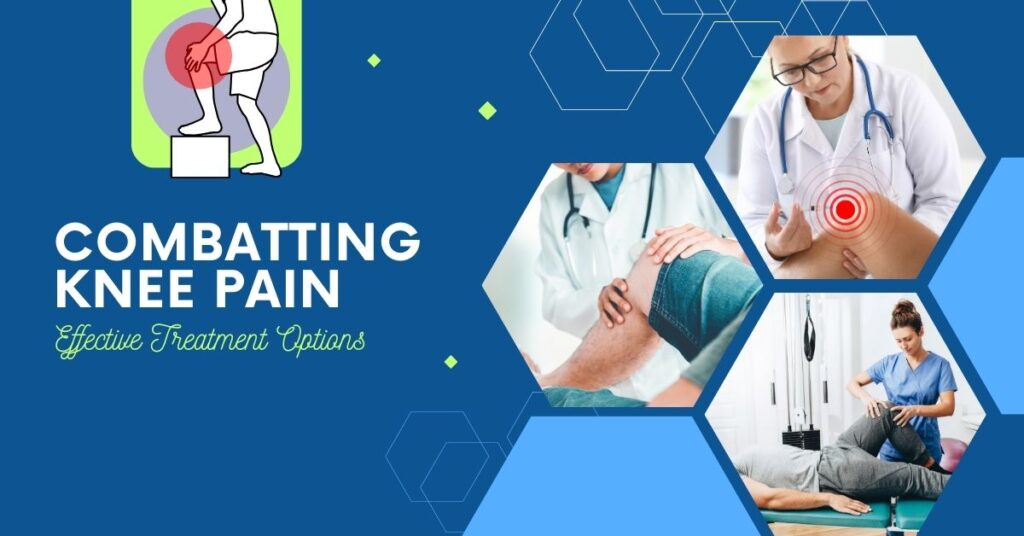Summary: In this comprehensive guide, we will delve into a range of effective treatment options to combat knee pain. Whether you’re seeking alternatives to knee replacement surgery or looking for the best non-surgical knee pain treatment, we’ve got you covered. From conservative approaches such as physical therapy to advanced interventions, we’ll explore the options that can help you find relief and regain your mobility.
Introduction
Knee pain can be a debilitating issue that affects individuals of all ages. Whether it’s due to ageing, sports injuries, or medical conditions like osteoarthritis, finding the right treatment approach is crucial to maintaining a good quality of life. In this article, we will explore various treatment methods for alleviating knee pain, focusing on non-surgical alternatives that can help you avoid the extensive recovery associated with knee replacement surgery.
1. Physical Therapy
Physical therapy is often the first line of defence when managing knee pain. One with joint pain finds it challenging to continue doing regular physical activities, but in reality, if one stays away from physical activities, the lack of movement can enhance the symptoms of stiffness and pain. Skilled physical therapists can develop customised exercise programs to strengthen the muscles surrounding the knee, improve flexibility, and enhance joint stability. This approach particularly benefits individuals with mild to moderate knee pain and can significantly reduce discomfort.
2. Medications
Over-the-counter pain relievers, such as nonsteroidal anti-inflammatory drugs (NSAIDs), can provide temporary relief from knee pain by reducing inflammation and alleviating discomfort. However, long-term use of these medications should be discussed with a healthcare professional due to their potential side effects.
3. Injections
For more severe knee pain, corticosteroid injections can be considered. These injections can provide short-term relief by reducing inflammation and pain. Hyaluronic acid injections are another option, especially for those with osteoarthritis, as they can help lubricate the joint and alleviate pain. These also have potential side effects, and so the number of shots given to you per year generally limited by your healthcare provider.
4. Regenerative Therapies
Regenerative medicine has emerged as a promising non-surgical alternative to knee pain treatment. Platelet-rich plasma (PRP) and stem cell therapy are two innovative approaches. PRP treatment involves using the patient’s own blood components to stimulate natural healing in the knee joint. Stem cell therapy harnesses the regenerative potential of stem cells to repair damaged tissues and reduce inflammation. As these therapies involve using biological contents from the patient’s own body, there is a reduced risk of rejection. Also, as these are minimally invasive treatments, there is no risk of surgical equipment damaging the adjacent nerves of the tissue being treated.
5. Bracing and Supportive Devices
Braces and supportive devices can help distribute the weight and reduce stress on the knee joint. These devices can provide stability, decrease pain, and improve mobility, making them a valuable addition to a comprehensive knee pain treatment plan.
6. Lifestyle Modifications
Making lifestyle changes, such as weight management and engaging in low-impact exercises, can have a significant impact on knee pain. Maintaining a healthy weight can reduce the stress placed on the knees, and choosing activities that are easy on the joints, like swimming or cycling, can be beneficial.
7. Acupuncture
Acupuncture is an alternative therapy that involves inserting thin needles into specific points on the body to alleviate pain. While the evidence supporting its effectiveness for knee pain is mixed, some individuals find relief through this method.
8. Knee Unloader Braces
Knee unloader braces are designed to relieve pain associated with conditions like osteoarthritis. These braces work by shifting the weight away from the damaged part of the knee, providing relief and improved function.
9. Chondroitin and Glucosamine Supplements
Some people with knee pain due to osteoarthritis find relief by taking chondroitin and glucosamine supplements. These supplements are believed to promote joint health and reduce pain, although results vary from person to person.
10. Lifestyle Adaptations
Simple changes in daily routines, such as using assistive devices, ergonomic adjustments, and avoiding activities that exacerbate knee pain, can significantly improve one’s quality of life.
Conclusion
When it comes to knee pain, you have a range of effective treatment options, each with its own advantages. Whether you’re looking for non-surgical alternatives to knee replacement surgery or the best non-surgical knee pain treatment, the key is to consult with a healthcare professional who can help you determine the most suitable approach based on the underlying cause and severity of your knee pain. By exploring these treatment options and working closely with your medical team, you can combat knee pain, regain your mobility, and embrace a life free from pain and limitations.
